Outforia Quicktake: Key Takeaways
- Tropical rainforests are home to over 40,000 plant species and provide ideal conditions for plant life, including humidity, precipitation, and warm temperatures.
- Rainforests consist of various plant categories, such as flowering, fruit-bearing, herbaceous, and tree species.
- Many rainforest plants grow faster than plants in other environments due to factors like greater access to sunlight and water, favorable climate, and competition.
- Rainforest plants have developed adaptations to survive attacks from predators, such as slippery bark, thorns, shedding bark, and toxins.
- Deforestation and unsustainable harvest practices threaten some rainforest plant species, highlighting the need for conservation efforts.
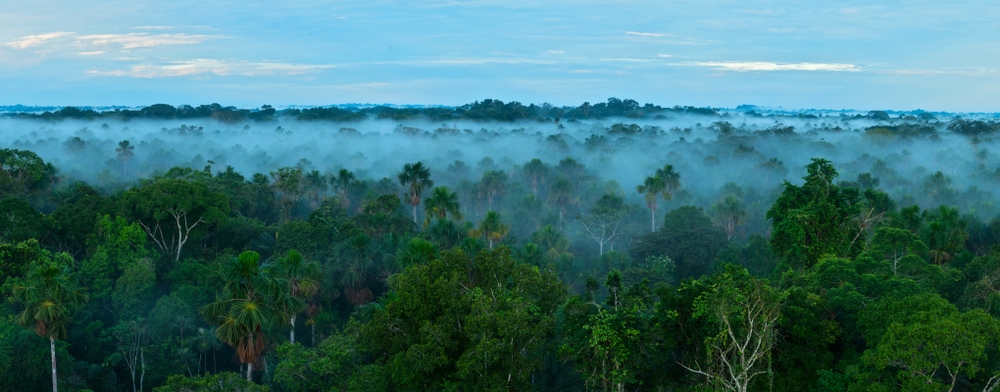
Rainforests around the world are known for hosting vast amounts of plants. Tropical rainforests, habitats have more plants than in any other environment throughout the world. For example, the Amazon rainforest is a host habitat for more than 40,000 plant species.
So many plants can grow in this climate because it has the ideal conditions for most plant life. Rainforests, both tropical and temperate, have humid climates and get vast amounts of precipitation compared to other climates. Tropical rainforests are also hot and feature plenty of sunny weather.
There is an enormous variety of plants in the tropical rainforests worldwide. While we can’t cover all of them, we have organized some of the most well-known, influential, and significant rainforest plants into categories with information on each plant to help categorize them.
What is a Rainforest?
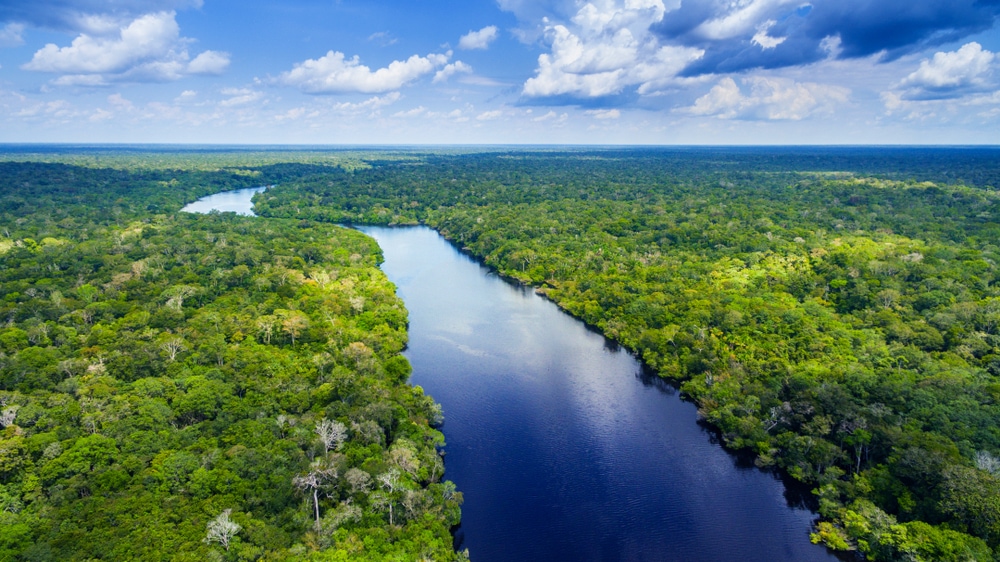
Before we dig into the plant species, we need to cover the rainforest. A rainforest is a tall, dense jungle. The ‘rain’ part of the name is because of the high amount of rain it gets each year. Rainforests get anywhere from 79 to 394 inches (2,000 to 10,000 mm) of rain each year, depending on which rainforest it is.
Rainforests are typically full of evergreen trees, even though evergreen trees are often associated with conifers. Since there is very little climate change in rainforests, almost every plant stays green throughout its entire life cycle.
Rainforests include some of the Earth’s longest-living plants and feature some of the oldest ecosystems in the globe.
You may also like: Learn more about the 39 Wonderful Animals in the Amazon Rainforest: With Images, Facts, and More!
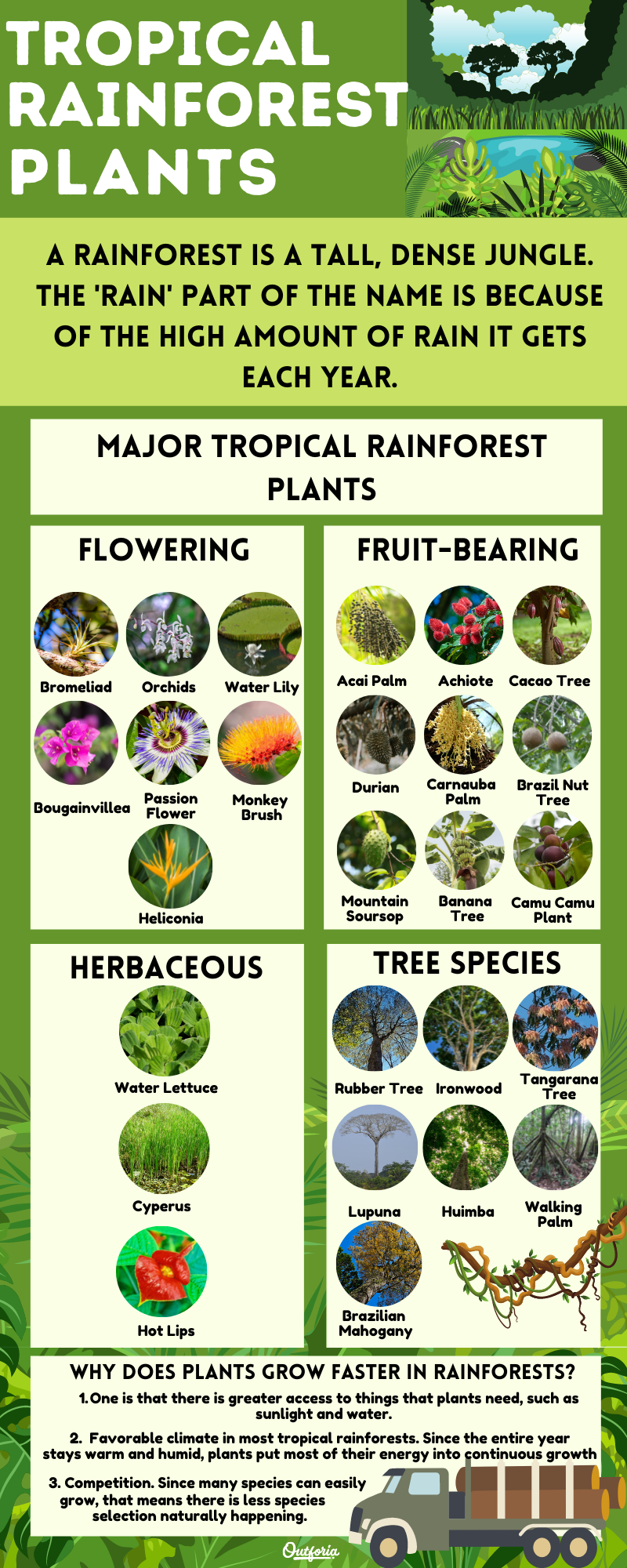
share this image on your site
<a href="https://outforia.com/tropical-rainforest-plants/"><img style="width:100%;" src="https://outforia.com/wp-content/uploads/2022/02/tropical-rainforest-plants-infographic-410x1024.png"></a><br>Tropical Rainforest Plants <a href="https://outforia.com">Outforia</a>
You may also like: Discover the Different Types of Plants from the Prehistoric to the Modern Time: Complete with Images, Facts, & More!
25+ Incredible Tropical Rainforest Plants: Exotic and Breathtaking
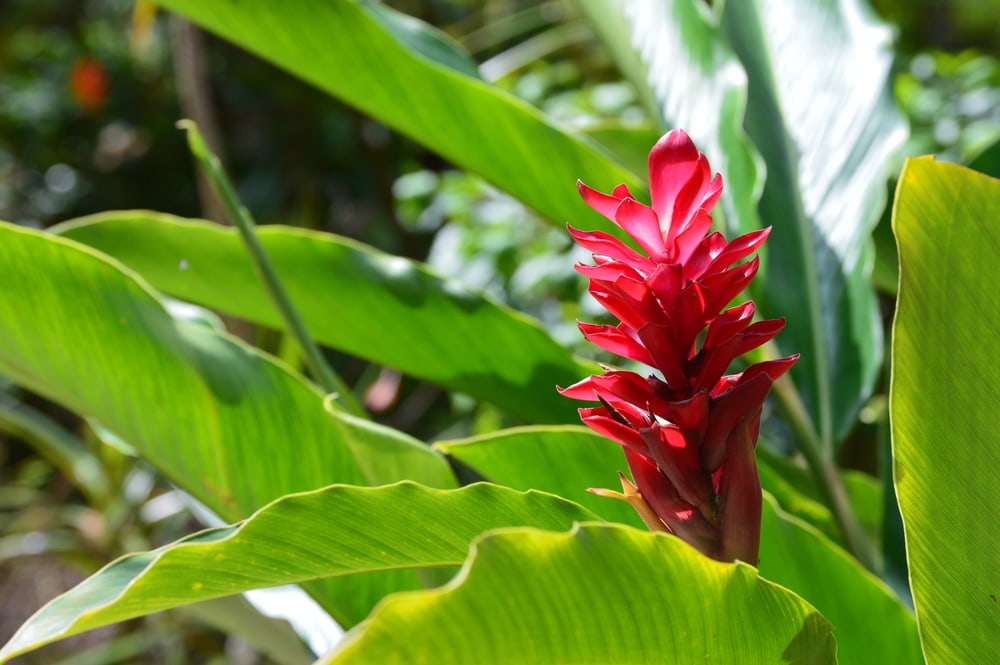
With more than 40,000 possible species to highlight, it is impossible to do so in a digestible way. That is why we have organized them into four primary categories, including:
- Flowering
- Fruit-bearing
- Herbaceous
- Tree species
Flowering Plants in the Rainforests
When in a rainforest, you will often be amazed by the flowering plant species growing all around you. There almost always seems to be bursts of color in the setting around you. We have pulled out some of the more common plants and highlighted species that belong under these headings.
1. Epiphytes (Air Plants)
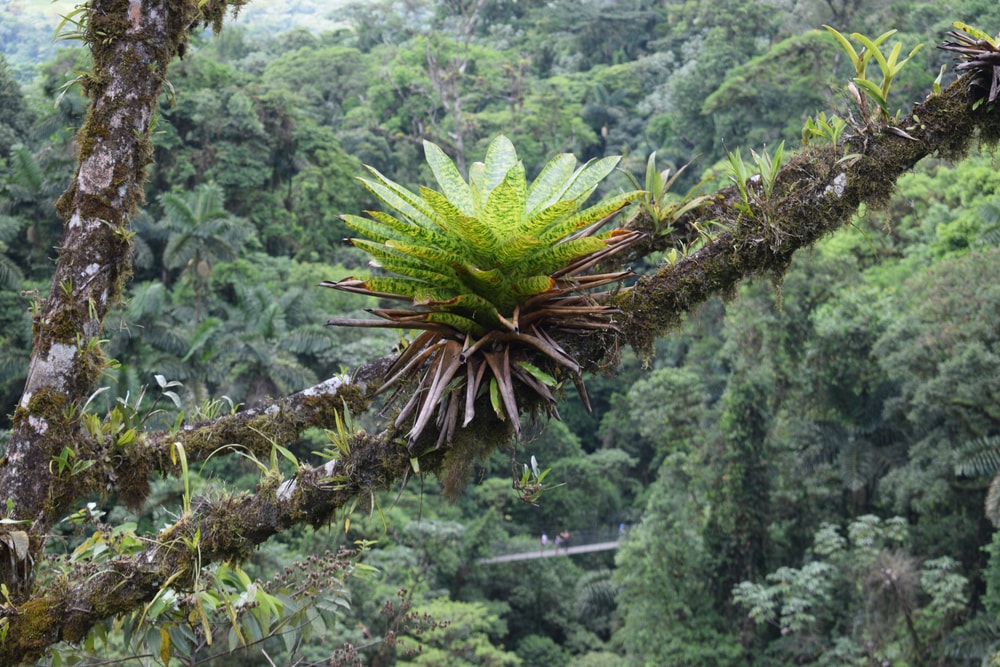
Epiphytic plants are plant species that live on other plants in the rainforest. They don’t have roots that dig into the ground. Instead, they have evolved a new strategy where their roots obtain water and nutrients from other plants.
Sometimes epiphytes simply rest on another plant, using them for their stability. At other times, they are mutually beneficial for each other. For example, the main plant gives the epiphyte some nutrients or water intake, and the epiphyte helps protect it or gives it a specific nutrient it needs back.
You will often notice that a single tree has dozens or even hundreds of epiphytic plants on it, from large to small. It can make the tree weigh several tonnes compared to expected. Epiphytic plants might even grow on each other. Some specific epiphytes include:
1.1 Strangler Figs (Ficus aurea)
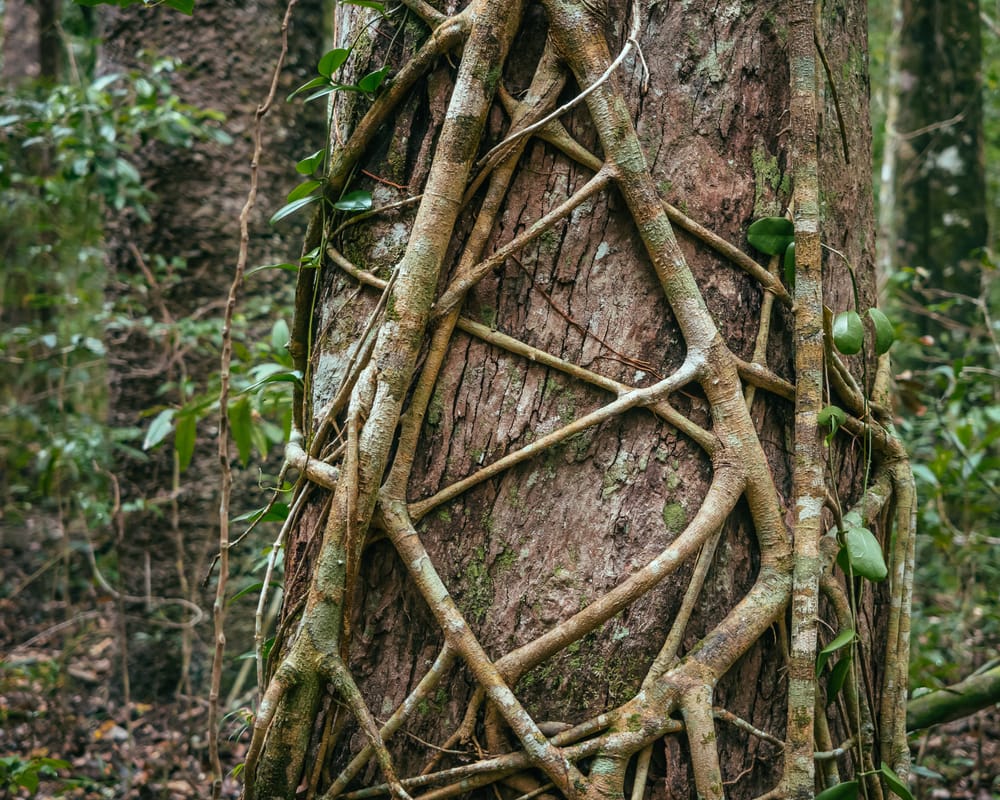
Strangler figs are among the few epiphytes that harm the plants that host them. As their name suggests, strangler figs grow around a tree, eventually forming a lattice. As a result, it captures all the sunlight and nutrients from the host, eventually causing it to die. However, the lattice allows it to keep its shape, even after the tree has long been dead and decayed.
1.2 Bromeliads
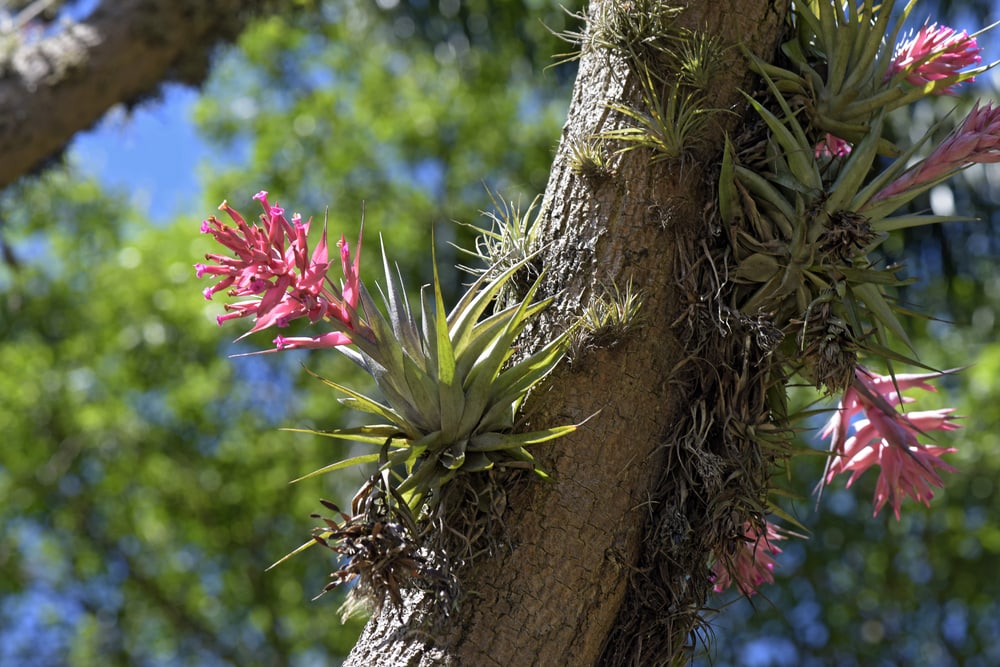
Bromeliads are one of the most beautiful kinds of epiphyte. They are flowering plants that are even more stunning because of the leaves that arrange themselves around the central flowering part of the plant in a rosette form. These are typically bright in color, such as red or orange. The leaves also function as a funnel, collecting water stored in the plant’s central tank. Specific bromeliad species include:
- Aechmea fasciata
- Guzmania lingulata
- Neoregelia carolinae
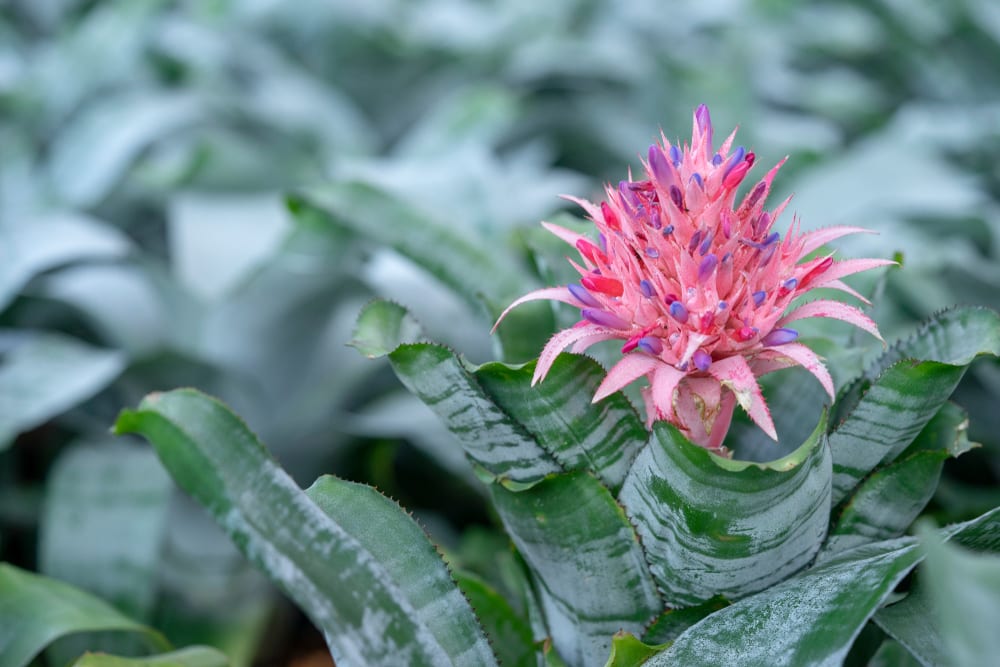
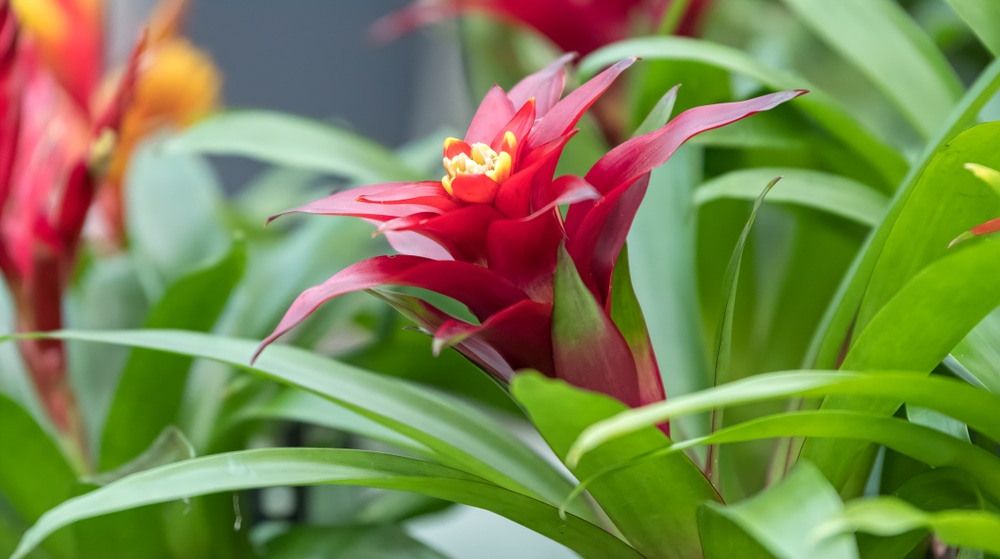
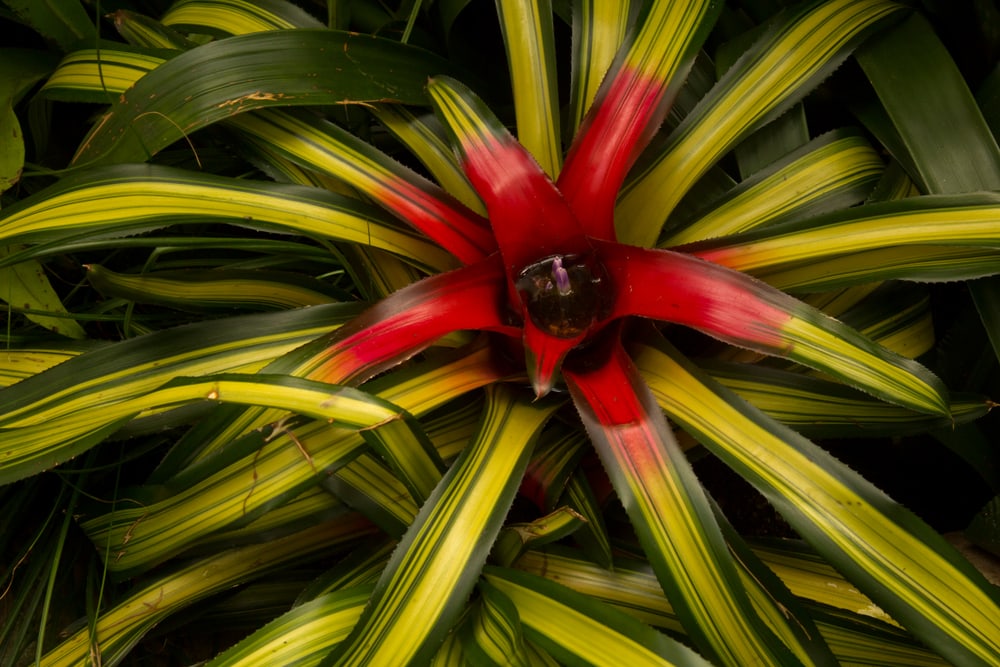
2. Orchids
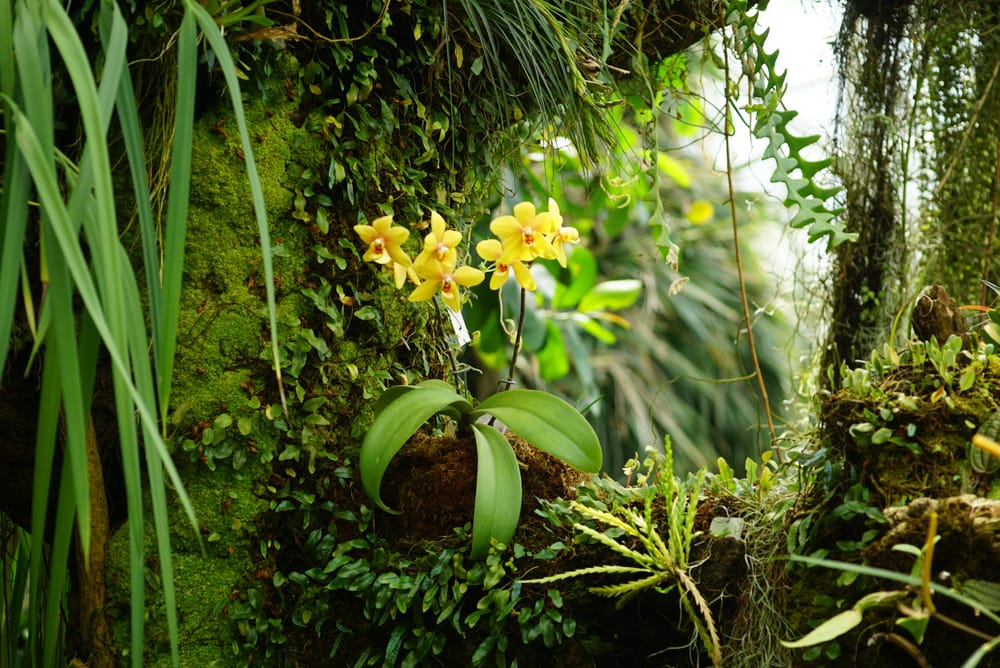
Orchids are one of the best-known flowering plants in a rainforest. They are another variety of epiphyte but have been pulled out because of their uniqueness, popularity, and vast species. There are more than 25,000 species in the Orchidaceae family, making it one of the largest families of flowering plants. Specific orchid species include:
- Bee orchid (Ophrys apifera)
- Blue orchid (Vanda coerulea)
- Moth orchid (Phalaenopsis spp.)


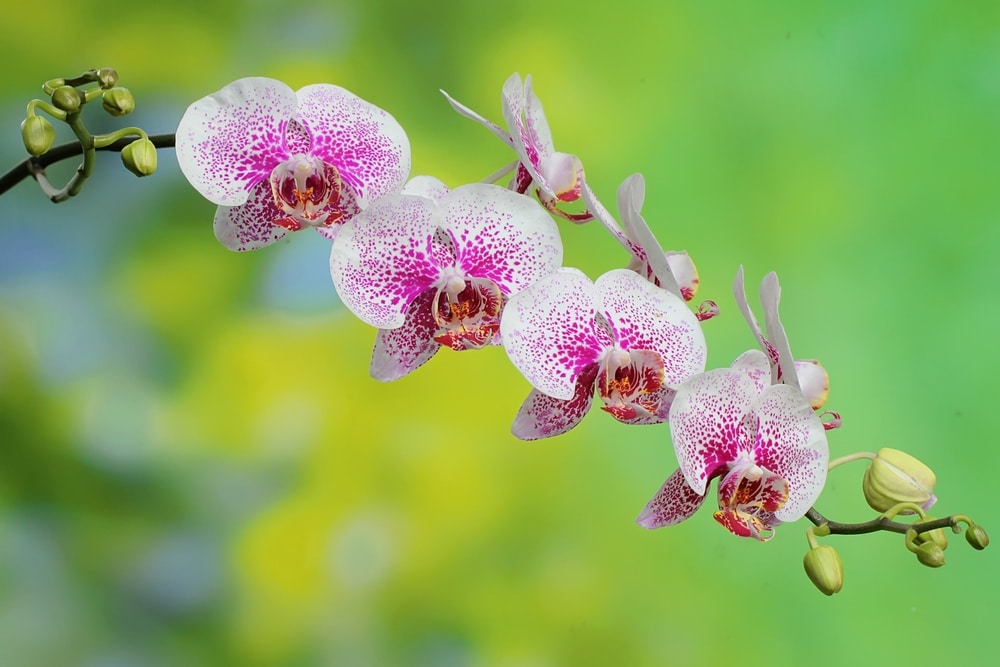
3. Water Lilies
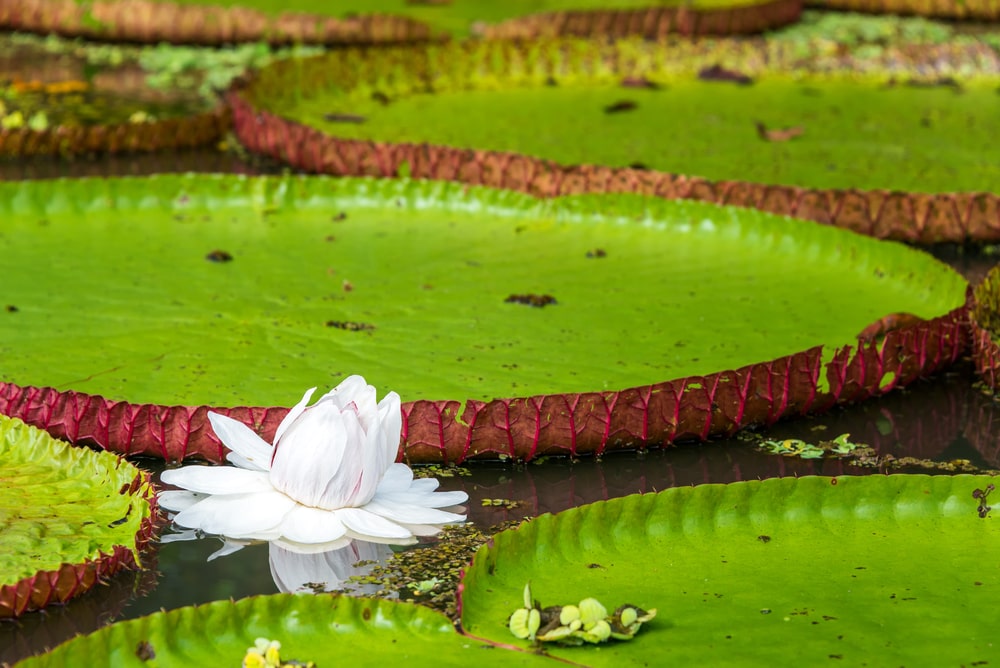
It shouldn’t come as a surprise that there would be plants that thrive where the water collects in an environment shaped by the amount of rain it gets. Water lilies offer an incredible display supporting aquatic growth, showing off their impressive flowers for three to five days each year before slowly sinking back into the water.
One species of water lily, in particular, is known for its rainforest adaptations. The Rainforest Water Lily (Victoria amazonica) is the largest member of the Nymphaeaceae family. It has enormous leaves that grow up to 10 feet (3 meters) in diameter. The flowers are gorgeous with a purple hue. However, they only last for 48 hours, emerge only at night, and measure up to 16 inches (40 cm) in diameter.
4. Vines
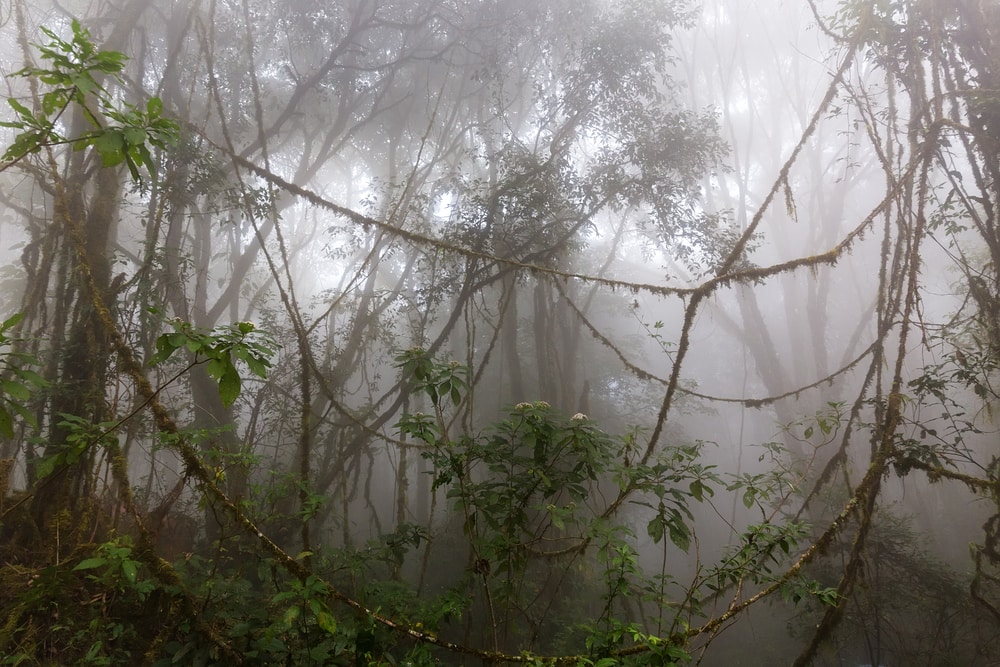
When you picture a tropical rainforest, you will generally see green everywhere. Part of this is because of the thick vining plants that grow all over the trees. A couple of these add a dense green cover and add color with their bright blossoms.
5. Bougainvillea
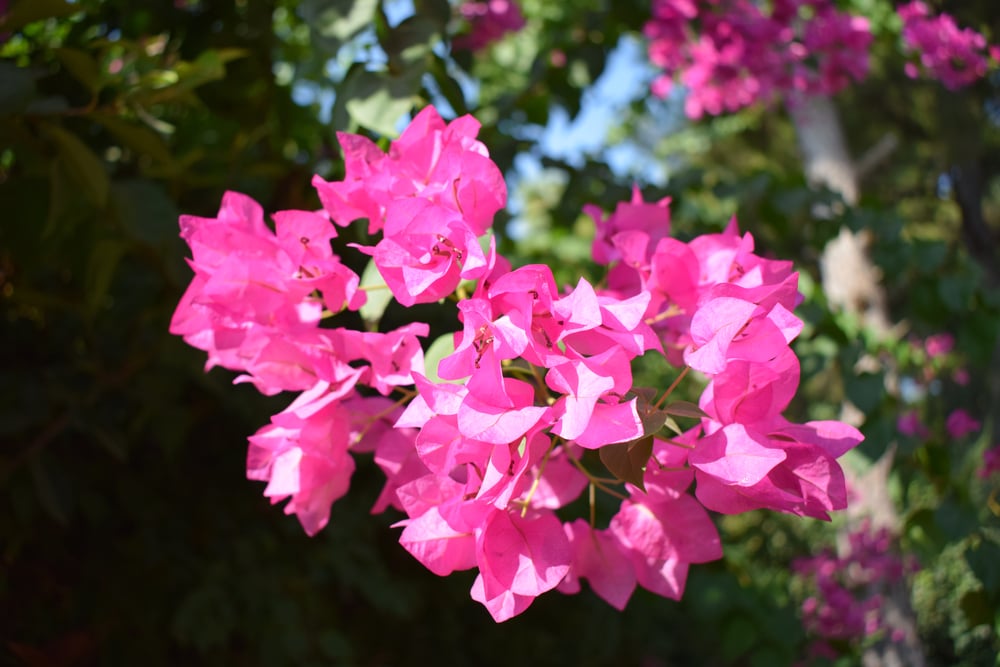
Bougainvillea is an entire genus of ornamental vines. There are also some shrubby plants and trees that belong to this genus. However, they are best known for their quick-growing vines of bright pinks, purples, whites, and yellows. Since they are an understory plant in the rainforest, they can be quite a drought-tolerant plant even while they bloom.
6. Passion Flower (Passiflora incarnata)
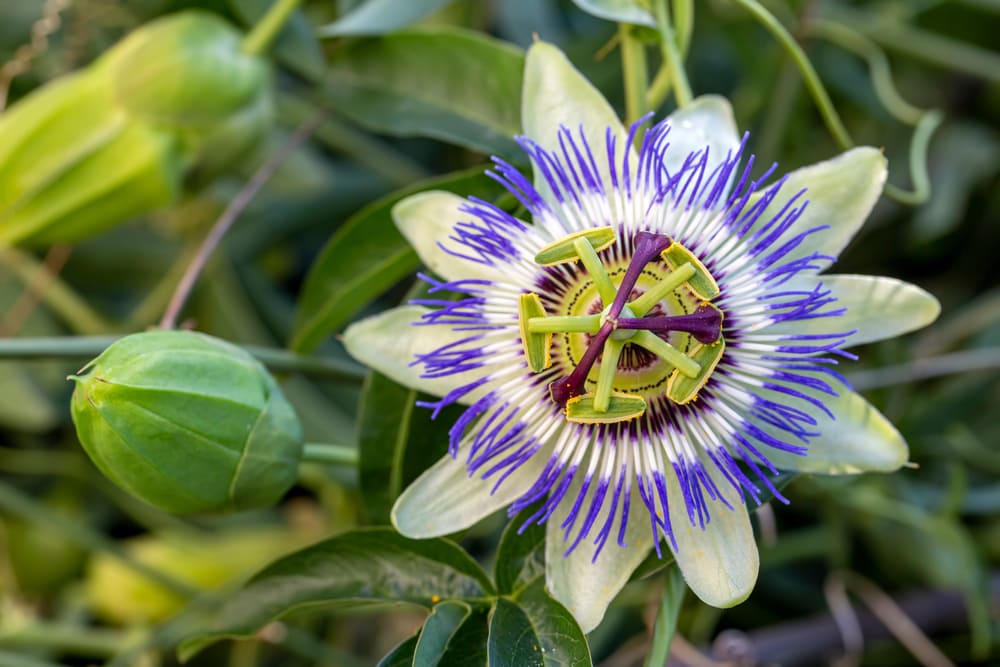
The Passion Flower is another climbing vine known for its white and purple flowers. However, passionflower isn’t just known for its beauty but its fruit and the calming chemicals it produces. In the Passiflora genus, more than 550 plant species decorate many tropical rainforests.
Miscellaneous (Yet Beautiful) Flowering Rainforest Plants
Certain flowering plants, shrubs, and trees stand alone in their genus as having flowering characteristics. However, their beauty helps them stand out for mention on this list.
7. Monkey Brush (Combretum rotundifolium)
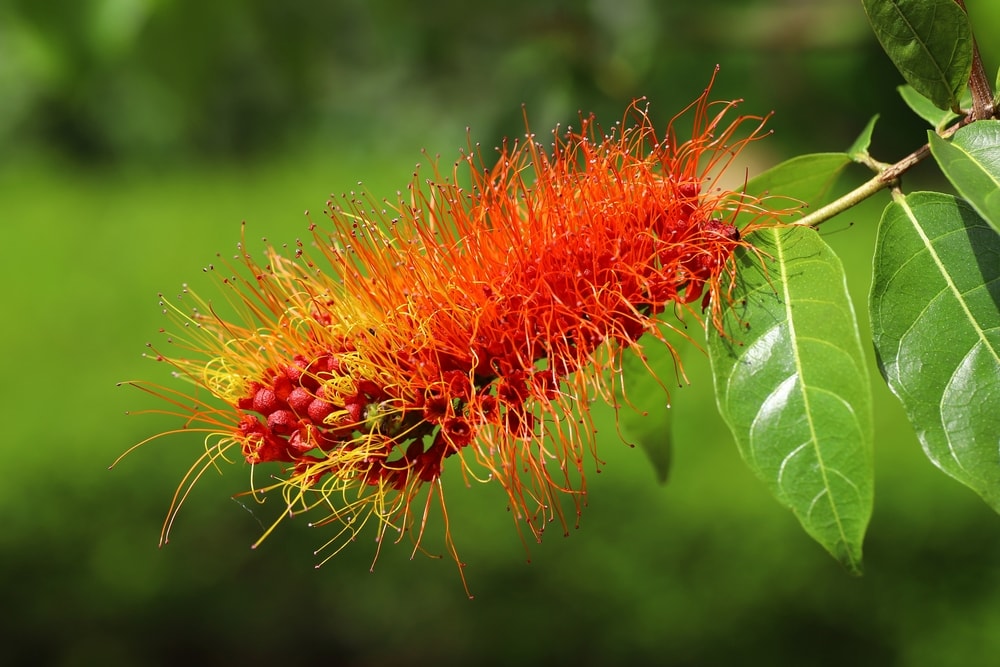
Monkey brush is not only beautiful but also features a unique flower. Some botanists classify a monkey brush as a shrub, while others think it is a vine. It is a fluffy flower that looks like a brush that has been dipped in bright orange, red, or yellow paint.
It isn’t only beautiful but also harvested for medicinal purposes by the locals. Supposedly, chewing the flowers can help to strengthen weak gums, and people can rub the sap on their foreheads to alleviate headaches.
8. Heliconia (Heliconia spp.)
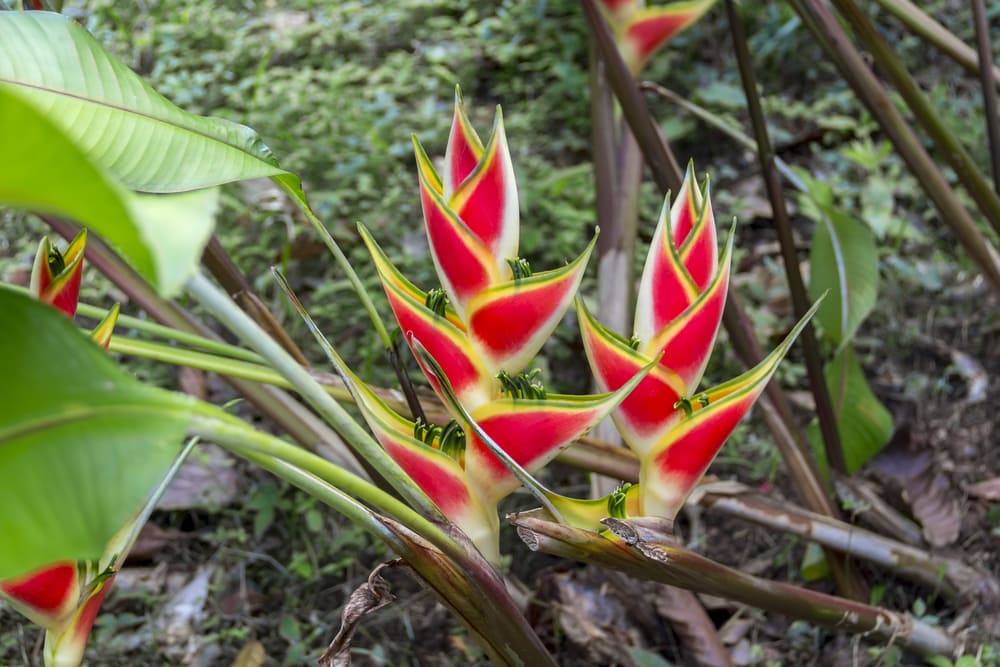
Heliconia is another beautiful and somewhat medicinal plant. They are found within the tropical rainforests all over the Americas, growing on the forest floor. The unique structure allows hummingbirds to act as their pollinators easily. Because of this structure, one of their common names is ‘lobster claws.’
Fruit Bearing Rainforest Plants
The next category of plants you will find within a tropical rainforest includes fruit-bearing plant species. Technically, almost all plants have a survival process that involves flowers and fruits of some sort. Therefore, the plants we include on this list have edible fruits.
1. Acai Palm (Euterpe precatoria)
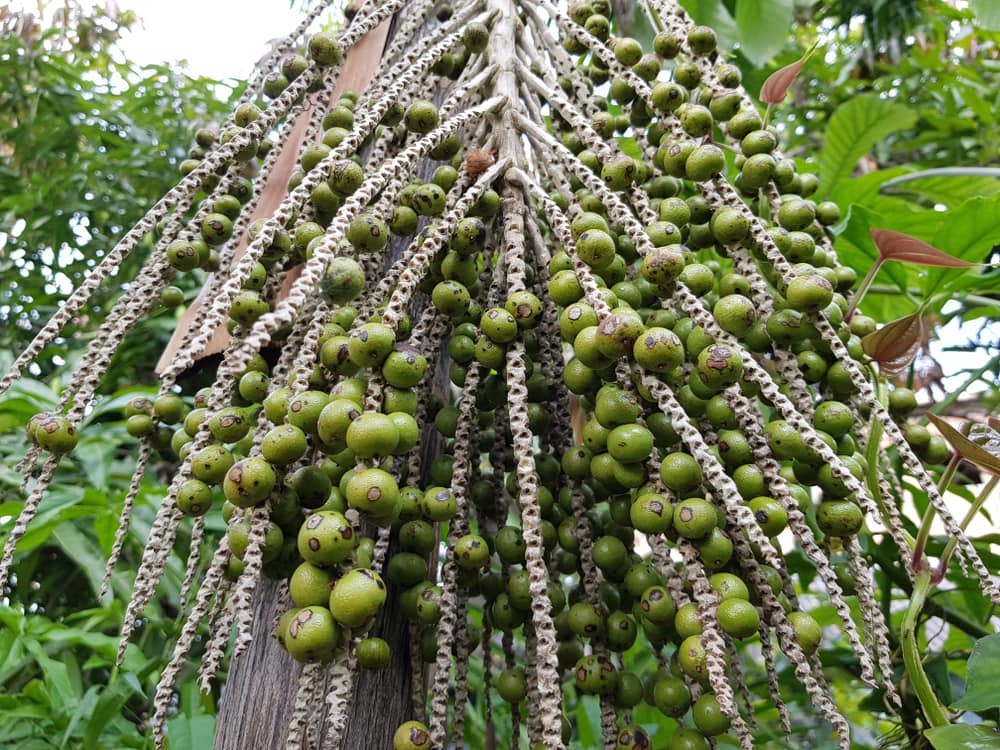
The Acai Palm produces a berry known as a ‘superfood,’ so it is lucky to be one of the most abundant palms in the Amazon Rainforest. It is one species that fills out the canopy of the rainforest with a height of 65 feet (20 m) tall. The berries have long been food for the birds and mammals of the rainforest. Now, they are also becoming more popular for human consumption.
Unfortunately, acai doesn’t only produce edible berries. It is also harvested for the inner core of the palm sold as the ‘heart of palm.’ Since removing the tree’s core kills it, the species needs to be sustainably managed not to damage the forest.
2. Achiote (Bixa orellana)
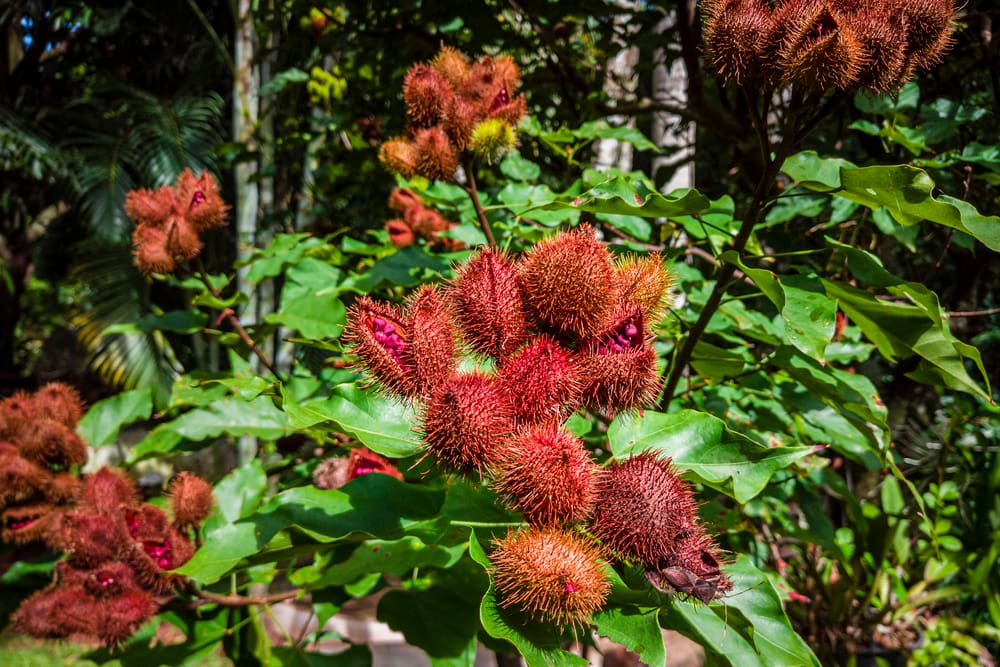
The Achiote plant is also called the ‘Lipstick Tree.’ It can grow up to 12 feet (3.6 m) tall. It is an evergreen plant that has a grounded canopy. Then, it begins to burst with vivid, prickly fruits that hold tasty seeds inside. The tree is a native species to rainforests within South America. The Incas initially used fruit and seeds as ingredients in their blood-red chocolates.
3. Cacao Tree (Theobroma cacao)
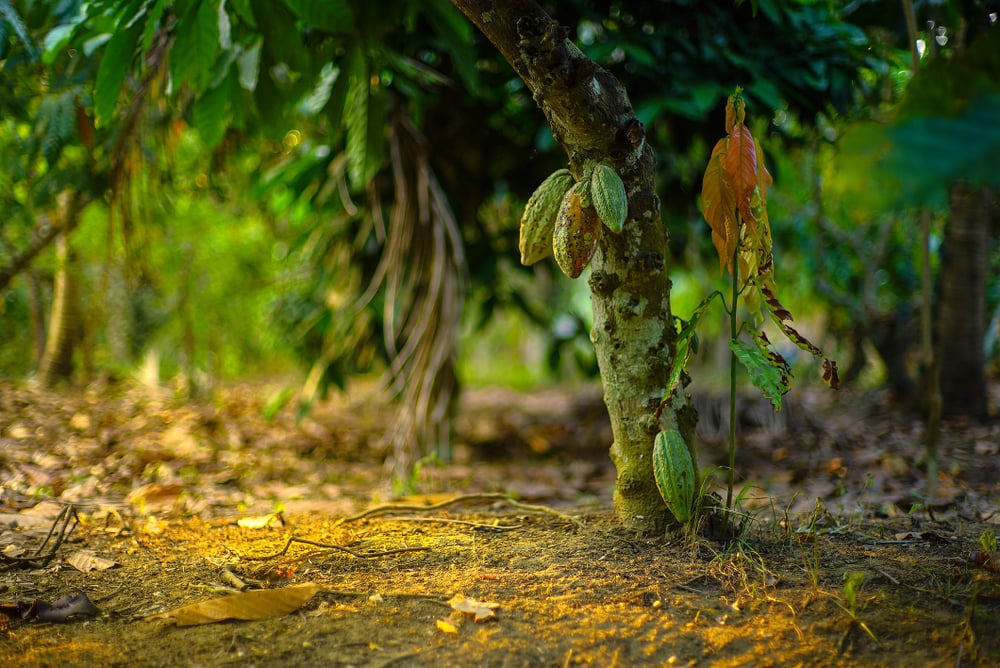
We couldn’t talk about the Incas and their chocolate production without mentioning the beloved cacao tree. The Cacao Tree, or cocoa tree, is a small evergreen in the Malvaceae family. The fruits on the cacao tree are large but aren’t the prime focus of the tree. Instead, the seeds inside the fruit, the cocoa beans, are why the fruits are harvested. The plant is relatively small as an understory tree as 13 to 26 feet (4 to 8 m) tall.
4. Durian (Durian)
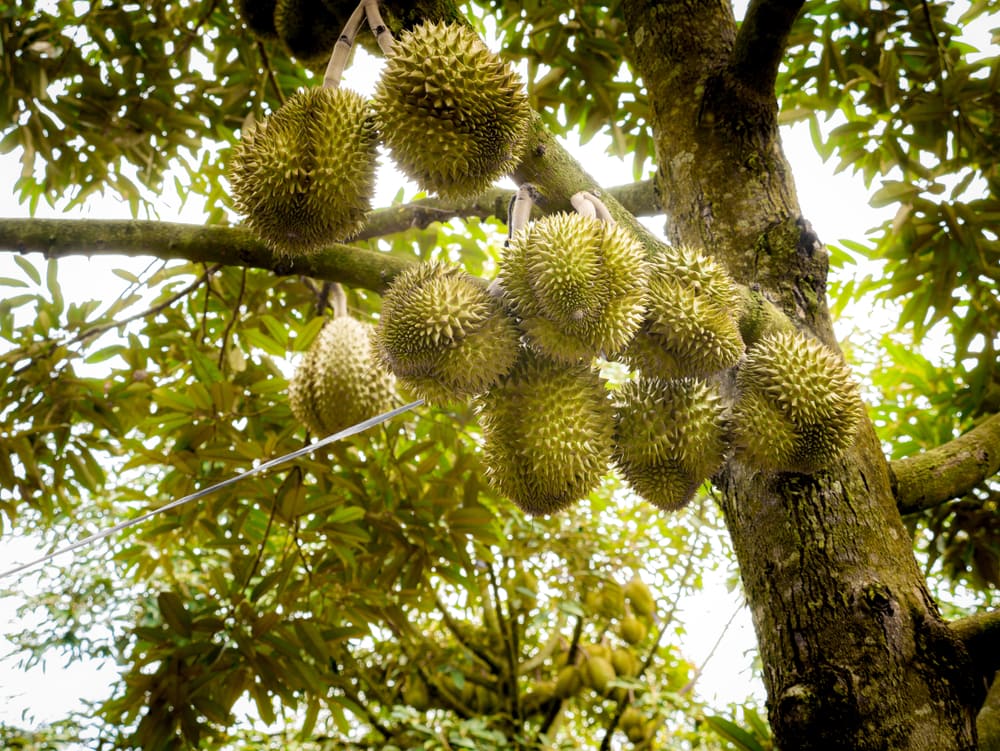
Durian is one of many edible fruits in the rainforest. It is one of several tree species in the genus Durio that are edible. Durian grows in tropical rainforests throughout Indonesia, Malaysia, Thailand, and the Philippines. It has a spiky outer layer with juicy yellow fruit inside loaded with Vitamin C.
5. Carnauba Palm (Copernicia prunifera)
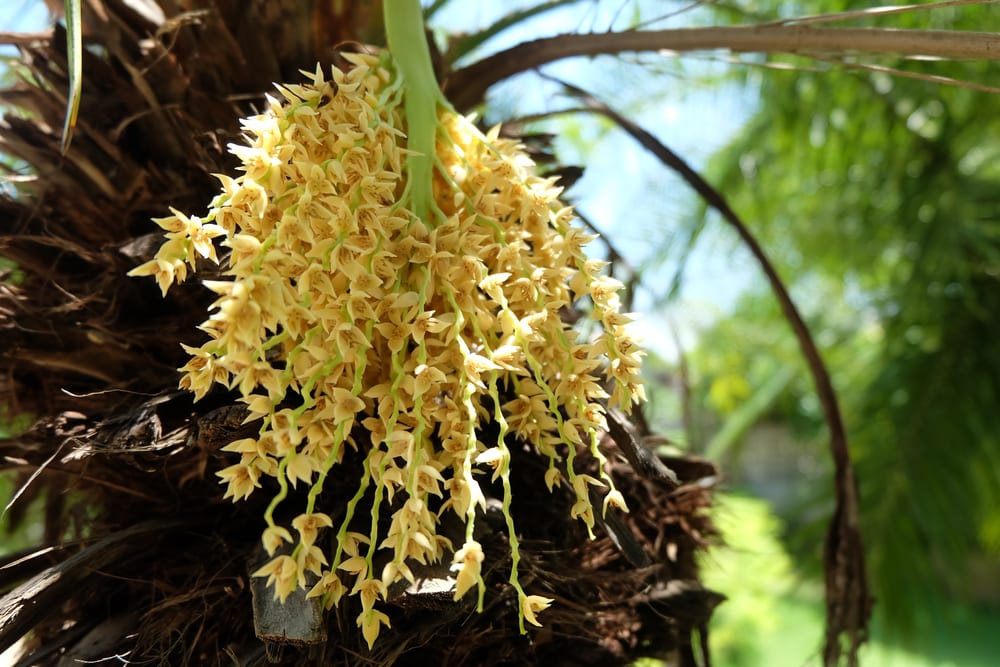
The Carnauba Palm is a tree species in the rainforest nicknamed the ‘tree of life.’ That is because of the many products that come from it. The most prominent product is palm wax or Brazilian wax. It is wax made from the leaves of the palm. The fruit is another one of its byproducts, eaten by animals and humans, and its wood makes an excellent building material.
6.Brazil Nut Tree (Bertholletia excelsa)
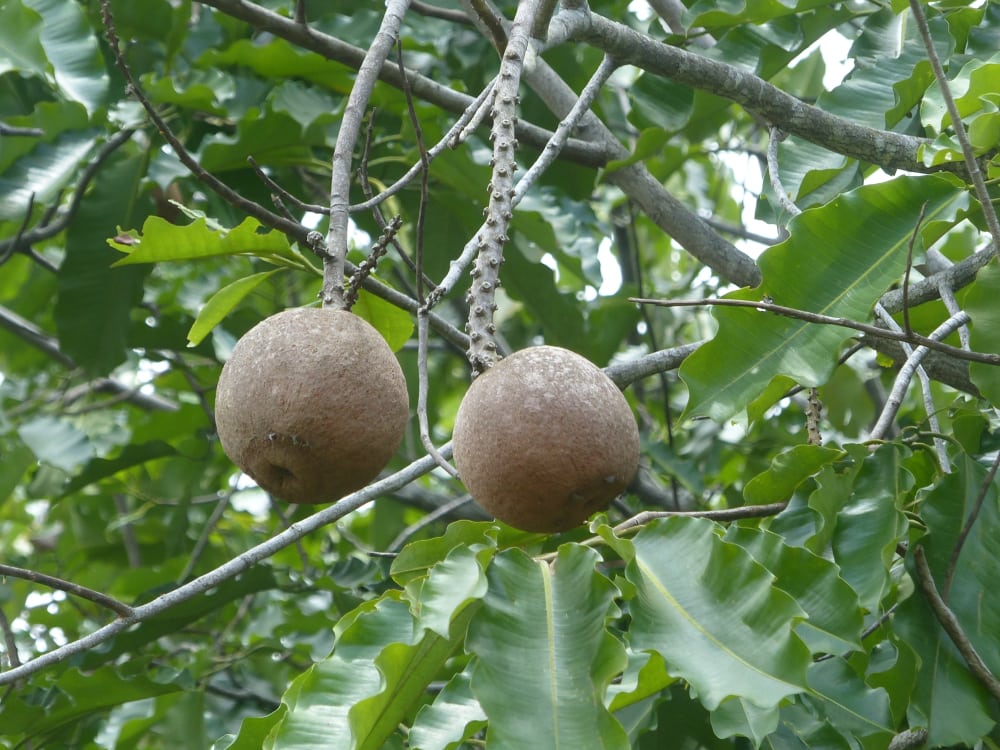
The Brazil Nut Tree is one of the iconic trees of the Amazon Rainforest. They are a predominant canopy tree that grows around 160 feet (50 m) tall with a straight trunk and busy crown. Although the tree is most recognizable for its height, the fantastic nuts it produces have gained worldwide notoriety. They were first described in the early 1800s and have grown as a well-known delicacy ever since.
7. Mountain Soursop Tree (Annona montana)
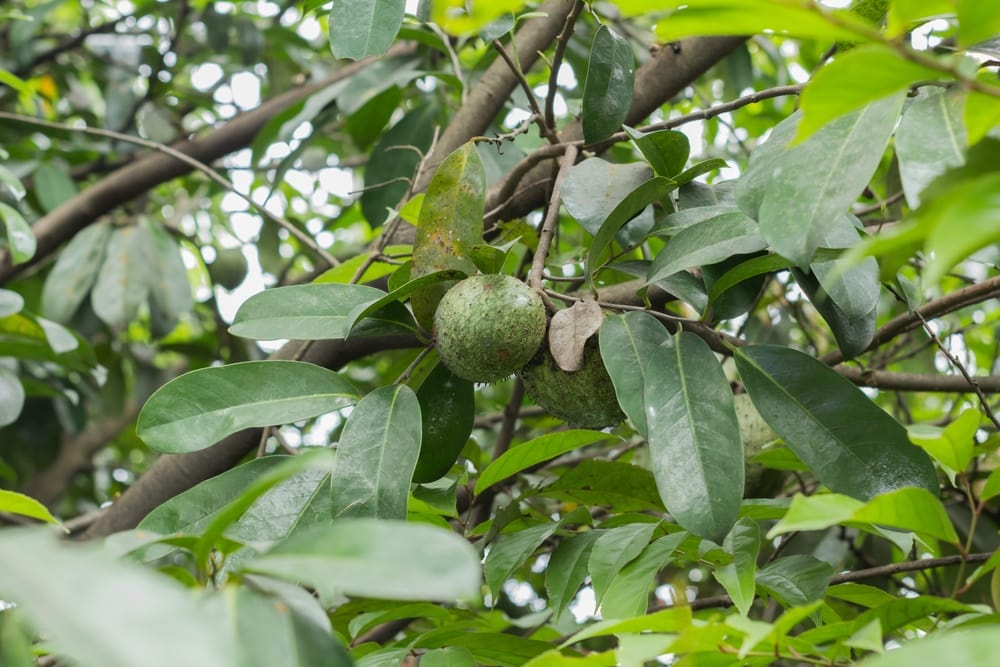
Another tree that produces somewhat of a spiky fruit is the Mountain Soursop. Although edible, it is best known for its traditional application as a medicinal plant. The fruits are sometimes eaten with desserts. The plant is native to tropical rainforests in Central and South America.
8. Banana Tree (Musa spp.)

We would be amiss if we didn’t mention the plant that produces one of the world’s most popular fruits, the banana. There are many banana tree species in the Musa genus, but only a handful produce the delicious fruit. The plant is originally from the rainforests of southeast Asia but is now grown with great success throughout Central and South America.
9.Camu Camu Plant (Myrciaria dubia)
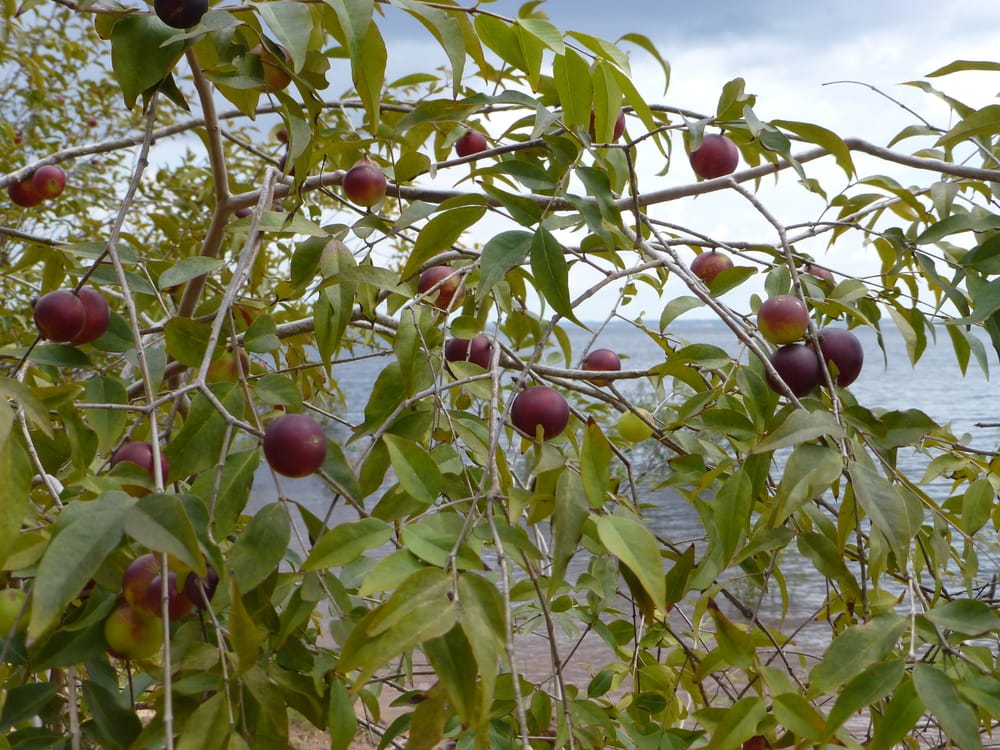
The Camu Camu plant has both fruits and delicately beautiful cream flowers. The tree produces the camu camu fruit, a tart citrus fruit that grows on the shrubs next to bodies of water. That enables the fruit to be dispersed by fish instead of relying on mammals or birds. They are very high in Vitamin C and popular with locals in northern Peru.
You may also like: Are Strawberries Berries? The Answer Is Un-Berry-Vable!
Herbaceous Rainforest Plants
Although most plants have fruits and flowers of some kind, certain species are better known for their foliage than their colorful or edible contributions to the plant world.
1. Water Lettuce (Pistia stratiotes)

Water Lettuce is the single species in its genus. It has a questionable origin, but its natural habitat is pantropical. You can often find this plant floating in almost any fresh waterway in tropical and subtropical climates. Because of its extensive growth, it is now considered an invasive species and encourages mosquito breeding habitats.
Regardless, it is a beautiful plant with deep green leaves that rise in multiple layers from the water. It is a perennial with very soft leaves and long, clumping root systems that extend underneath the water’s surface. Unfortunately, if allowed to overgrow, the water lettuce can inhibit the exchange of gases in the water body and end up killing most of the other life it relies on within the lake or pond.
2. Piripiri (Cyperus articulatus)
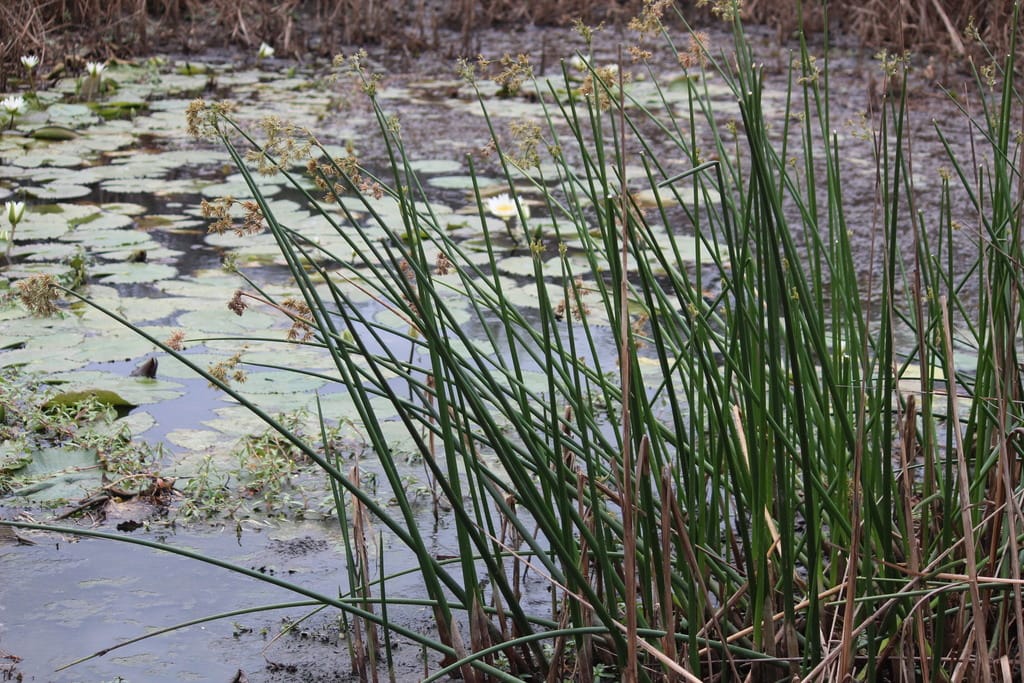
Piripiri is another primarily water-loving plant. This is a tropical reed that grows in rainforests around the world. Because of its extensive growth, it has many common names. For example, Piripiri is often what is called in areas within the Amazon Rainforest.
Piripiri is much better at regulating itself in waterways than water lettuce. It is also quite a bit more useful. It has medicinal uses for various conditions and is a common plant within a tropical, medicinal garden. As a reed, it has a unique texture and fibrousness that makes it useful for handicrafts. It is also edible and is often dried to flavor cooked food.
3. Hot Lips (Psychotria elata)

You might be wondering what Hot Lips is doing on our list of herbaceous plants instead of the flowering ones. The trick with this plant is similar to that of the beloved Yuletide plant, the Poinsettia. On both of these plants, the structures assumed to be the flowers are bracts or colored leaves in these plants’ cases.
Hot Lips grow in tropical rainforests throughout the Americas. Their red color serves to attract pollinators, butterflies, and hummingbirds. The shape of the flower alongside the sturdy bracts also gives the plant the perfect form to supply many butterfly species with nectar.
You may also like: Avoid these Toxic Plants you Might Mistake as Food: With Images, Descriptions, and More!
Tree Species in Rainforest Habitats
Trees are arguably the most influential and shaping force of a tropical rainforest. The dense and highly selective canopy layer formed by large trees is what influences the growing conditions of all the understory layers in a rainforest. Our list includes some of the most significant canopy trees mixed with some specific examples of understory trees.
1. Rubber tree (Hevea brasiliensis)
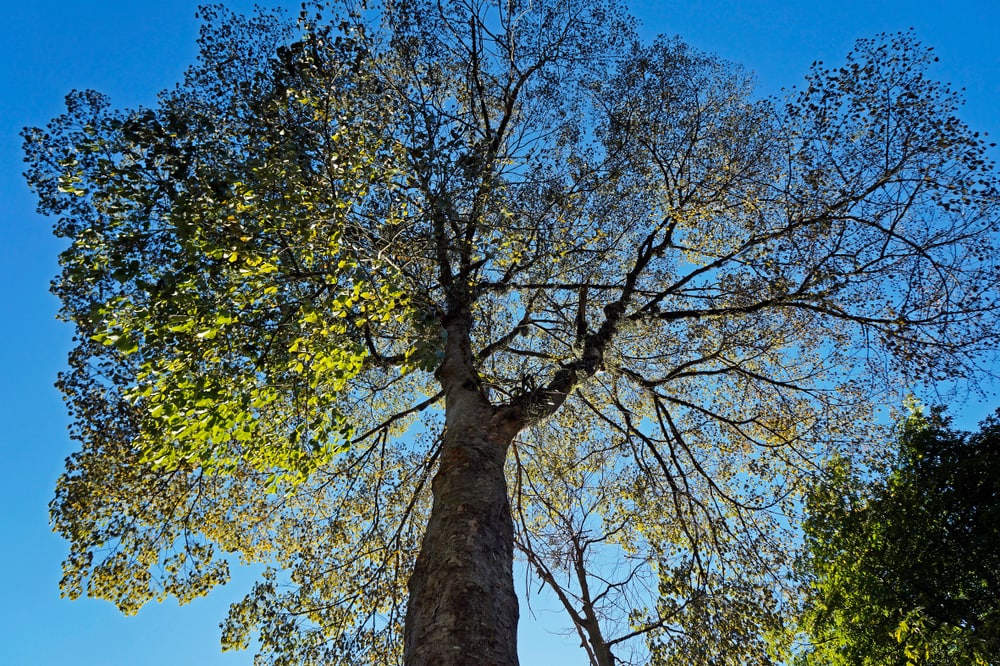
The Rubber Tree is a flowering tree in the spurge family. They are native to South American tropical rainforests. They are very useful plants grown on plantations in the tropics throughout Southeast Asia and Africa, replacing the rubber plant as the primary source of natural rubber.
The tree has softwood with high branching limbs. One defining characteristic of the tree is that it oozes liquid latex from any wound on the tree. The latex can be harvested, coagulated, and processed products like surgical gloves and tires.
2. Ironwood (Dipteryx)
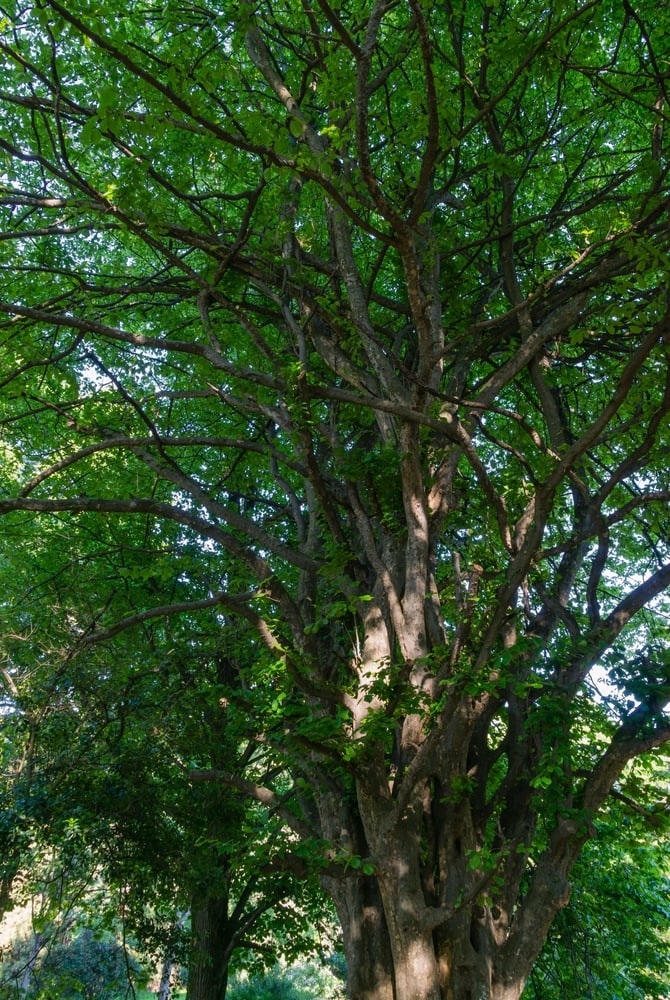
Ironwood is a species of hardwood tree in the Amazon Rainforest in the genus Dipteryx. The tree is one of the largest genera and a pinnacle part of the rainforest’s ecosystem. It can grow to 164 feet (50 m) tall. Even though tropical plants grow quickly, they continue to grow and live for 700 years or more.
Because of the time it takes for this tree to establish, the tree is threatened because of deforestation of the Amazon Rainforest. Nevertheless, large conservation projects are going on for them because they are integral pieces of the ecosystem, providing home and nutrition to rainforest animals, such as harpy eagles, the world’s largest birds of prey.
3. Tangarana Tree (Pseudomyrmex triplarinus)
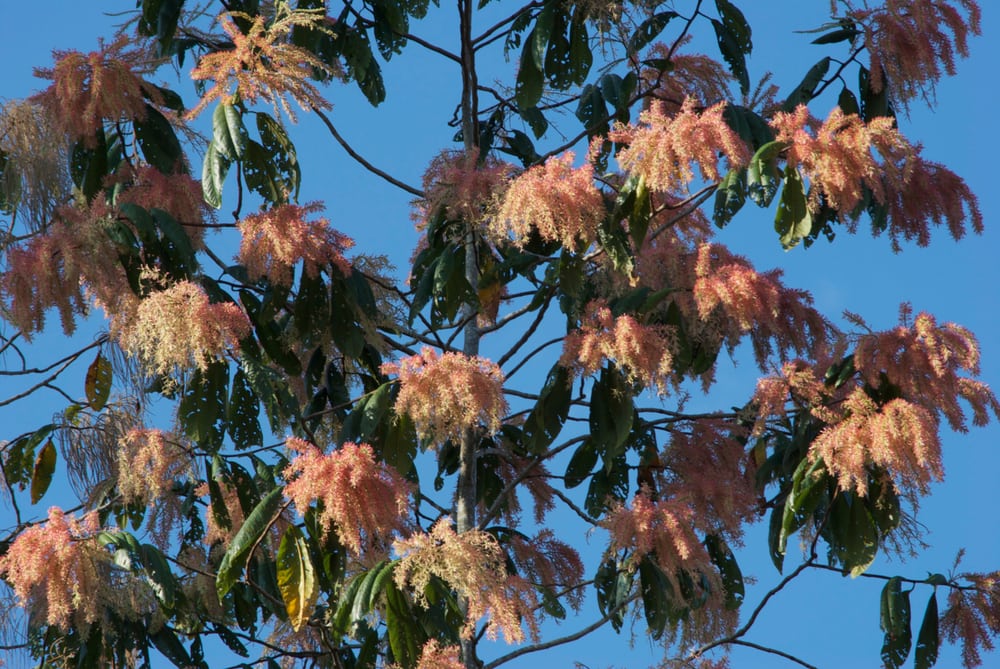
Tangaranas are a tree native to the Amazon Rainforest. Most of its common names have to do with its natural defenses. When you first see the tree, it doesn’t stand out. However, when you get closer to the tree, you will see small holes in a variety of branches. These holes are home to thousands of ants that swarm out of the tree to protect it every time it’s disturbed.
Not only is the presence of the ants enough to help protect the tree. The ants are a species of fire ant (Pseudomyrmex triplarinus). They have a potent sting for anyone that stays close to the tree after it’s disturbed. These species have a mutualistic relationship with the tree. It can grow to around 98 feet (30 m) tall.
4. Lupuna (Ceiba pentandra)
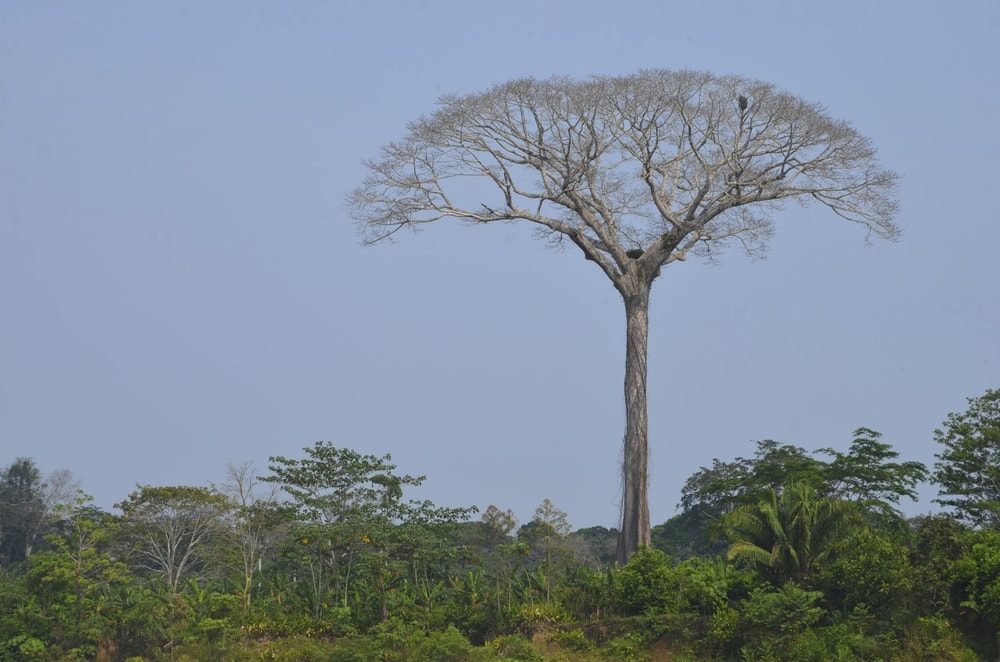
Another one of the more significant canopy trees is the Lupuna. Another name is ‘kapok’ because of the fibers you can get from their seeds. This material is often used to fill pillows, sleeping bags, and mattresses. You can also recognize it for its smooth bark. The tree grows to be around 160 feet (50 m) tall.
Lupina trees often grow along the edge of forests and along rivers. They are one of the few trees that aren’t evergreen in the forest since they drop their leaves during the dry season. This isn’t because of the change in temperature like other deciduous trees. Instead, it helps their pollinators, bats, get access to the large white flowers.
5. Huimba (Ceiba samauma)

The Huimba is another tall tree in the Ceiba family. It also grows to about 160 feet (50 m) tall. It holds high regard among the tribal groups in the Amazon Rainforest, such as the Tacama, a Bolivian tribe.
The Tacama people believed that the trees were home to evil spirits. They would protect the trees because they believed that passing the trees or cutting them down would anger the spirits. The spirits would cause diseases and deaths. The interesting aspect of this myth is the linkage scientists have found between deforestation and novel diseases arising.
6. Walking Palm (Socratea exorrhiza)
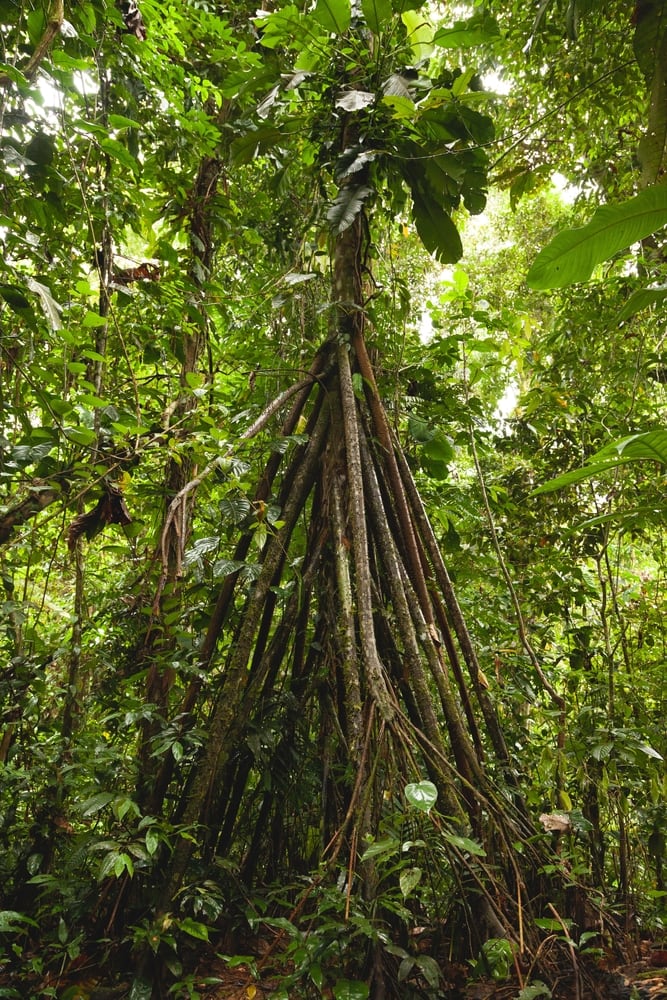
The Walking Palm is an interesting plant. It has gotten its name from the way the roots will continue to branch out, moving the roots out from the stem so that the plants can move to new areas with more water resources and nutrients.
The roots act as stilts for the trees, growing from the stem about 7 feet (1 to 2 meters) off the ground. The natives thought that the plant would walk around the forest at night. Although this has proven itself to be untrue, researchers still aren’t completely sure why the plant has adapted this way. The current theory is that the tree uses them to promote extra stability while it grows.
7. Brazilian Mahogany (Swietenia macrophylla)
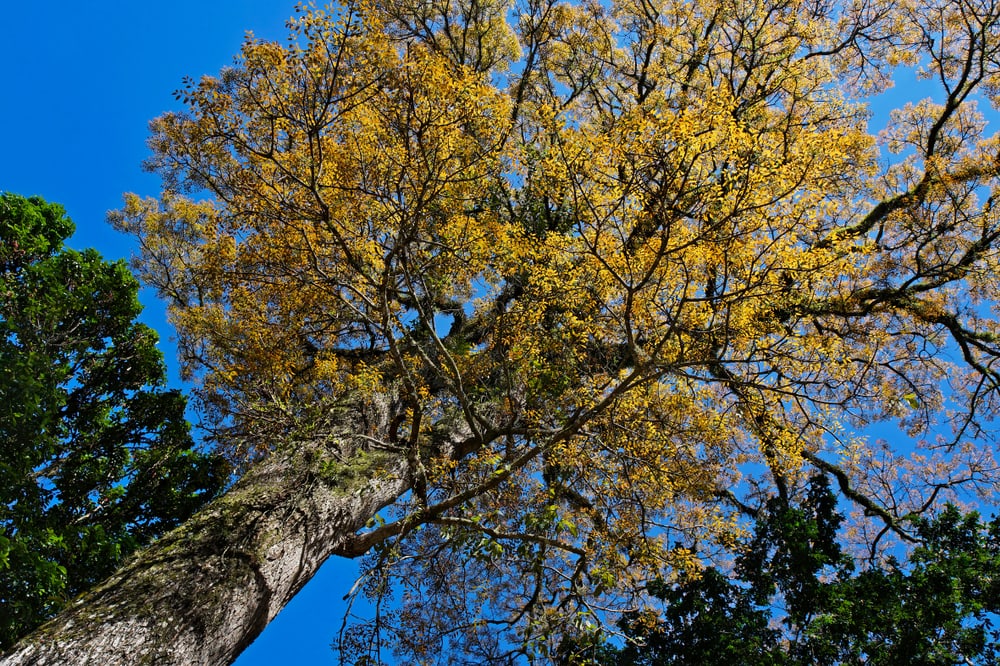
The Brazilian Mahogany tree has long been one of the most precious trees in the world because of the value of the wood. The wood is naturally reddish-brown, beautiful even without extra treatment. The tree is native to the rainforests in Central and South America. It is a hardwood species of tree.
You may also like: Learn the Different Types of Palm Trees From The Small Ones to the Unique Ones: Complete with Images, Facts, and More!
Growth Rates of Tropical Rainforest Plants
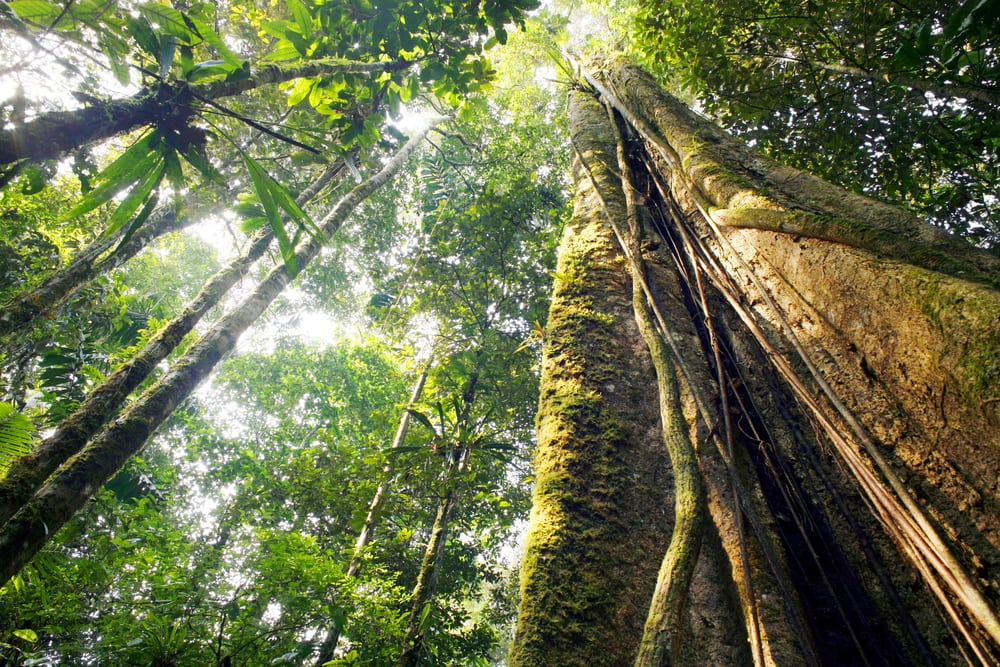
Plants that grow in tropical rainforests often grow much faster than in other environments and climates. There are many reasons for this.
One is that there is greater access to things that plants need, such as sunlight and water. Unlike in arid zones, plants don’t have to have adaptations to carefully conserve water uptake, which inevitably triggers slower growth to protect the plants from higher mortality rates.
Another reason for the rapid growth of most plants is the favorable climate in most tropical rainforests. In temperate areas, when nights get chilly or the seasons change, plants need adaptations to allow them to store nutrients and water for these seasons of slowed growth, almost like hibernation.
However, in a tropical rainforest, there is less of a yearly cycle of growth, bloom, fruit, store and prepare for winter. It isn’t necessary since the entire year stays warm and humid. That allows the plants to put most of their energy into continuous growth even while they flower and fruit.
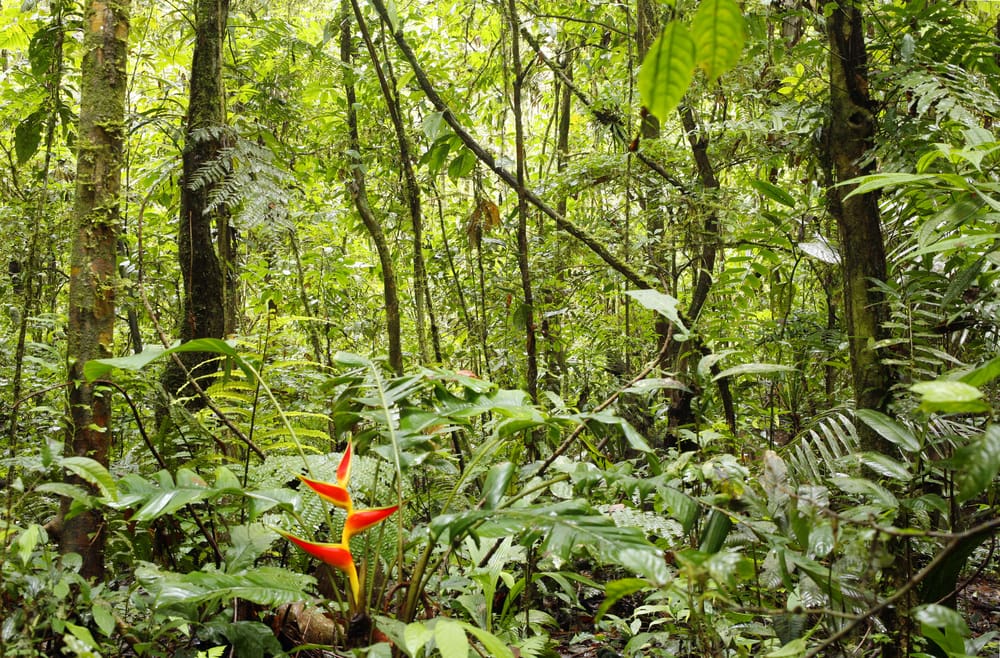
Finally, the last significant reason for the seeming super speed of growth that tropical plants exhibit is competition. Since the rainforest’s growing conditions are so favorable, many species can easily grow. That means there is less species selection naturally happening.
For a plant to survive in a tropical rainforest, it has to outcompete its immediate neighbors. That involves taking up more nutrients and water than the plants surrounding it to grow faster, reaching the sunlight faster, and claiming that spot as its own.
You may also like: Learn the Different Types of Pine Trees and Where You Can See Them: Complete with Images, Facts, Descriptions, and More!
Plants in the Rainforests Defenses Against Predators
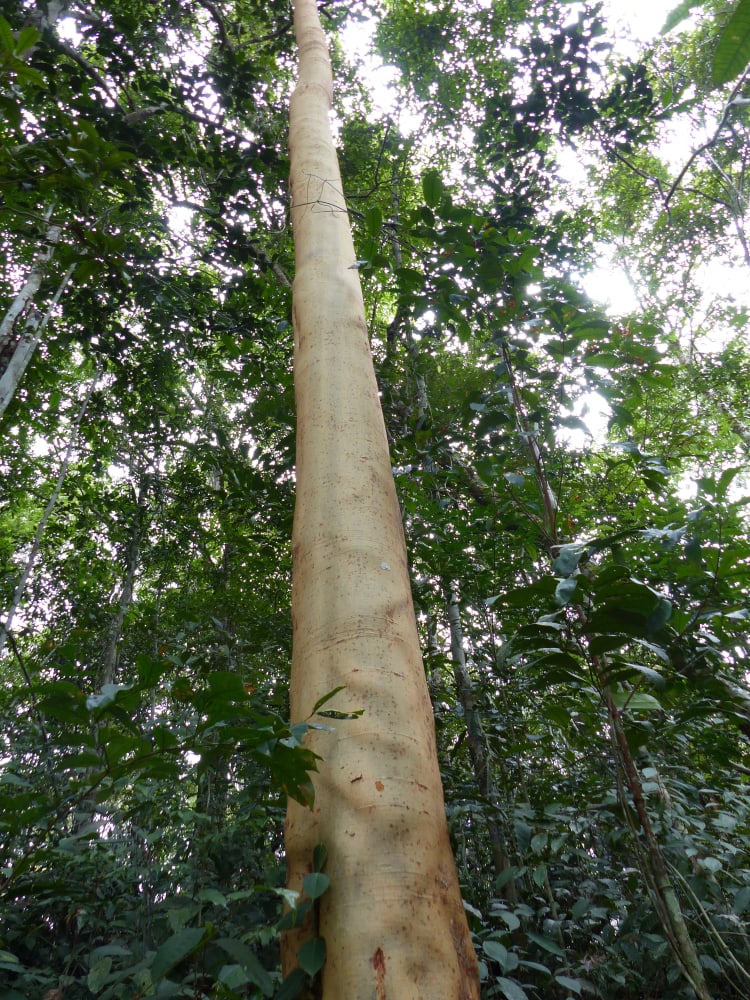
Plants in the rainforests are much tougher than they seem in general. There is a high level of competition in a rainforest environment. That means that only the plants with the best chances of survival will make it.
Because of this environment, plants have developed adaptations that allow them to survive attacks from predators, animals, insects, and humans. For example, the Capirona tree has a very smooth, slippery bark. Animals trying to climb it and damage the tree only slide off.
Many other plants in the rainforest are thorny and very sharp. This stops parasitic vines from climbing on them and stops animals from eating them.
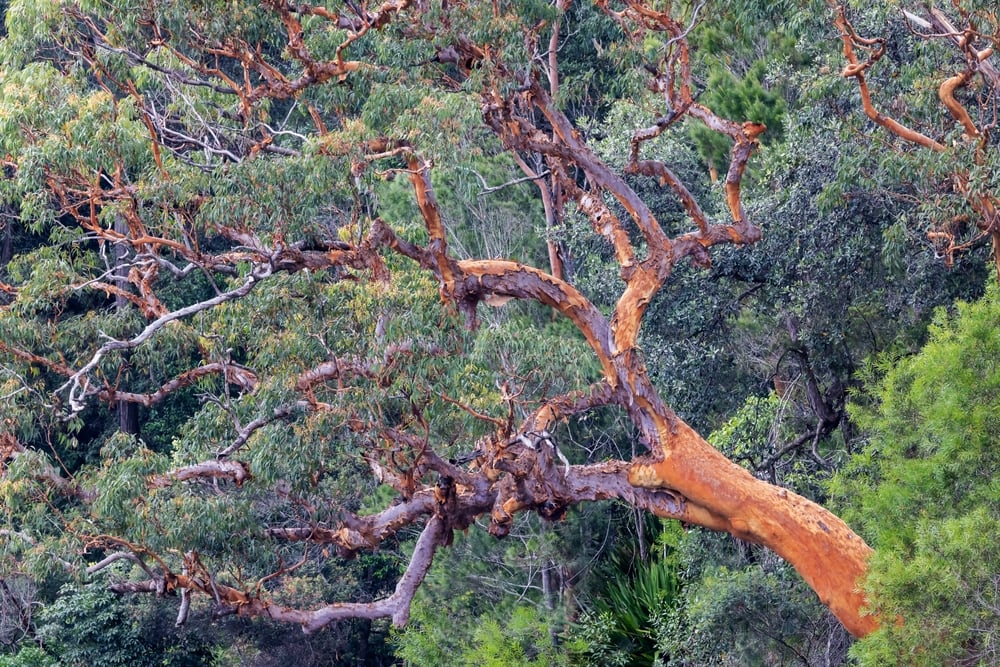
Some trees shed their bark. Although that might not seem helpful, it is a survival adaptation that stops vines like the Strangler Vine from growing on it for too long. As the vine grows and becomes heavier, it triggers the bark to peel off the tree, and the vine falls to the ground, saving the tree from a slow death.
Another common defense against predators is the use of toxins to kill or harm a predator if they ingest a part of the plant. Let’s take a look at the Castor Bean (Ricinus communis) as an example. It is common in Central and South America tropical rainforests, originating from East Africa. It has even become a popular, horticultural plant in North America.
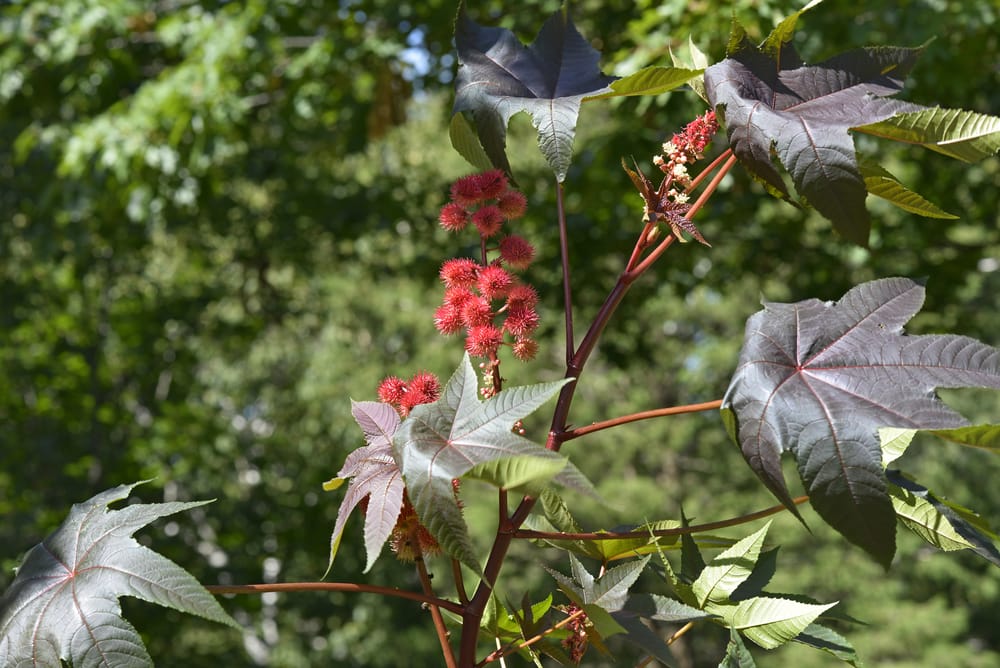
However, every part of the plant is highly toxic and can quickly kill a full-grown man if ingested. The toxin ‘ricin’ is identified in its Latin name.
Interestingly, even though ricin is incredibly dangerous, the seeds’ oil is beneficial. Castor oil is a common preservative, has medicinal qualities, and is a common kitchen ingredient.

Finally, it isn’t only poisonous toxins that plants carry as defenses. There are also plants like Dumb Cane (Dieffenbachia seguine) that contain a specialized cell with a defensive compound.
It is formed from microscopic crystals that induce pain and detonate when broken. The chemicals form an enzyme similar to types of reptilian venom that cause paralysis. If a human consumes them, it can cause the loss of speech, hence the name ‘dumb cane.’










